'RESTRICTED' 1942 Dated - U.S. Navy Typical Cruiser Blueprint Cross Section
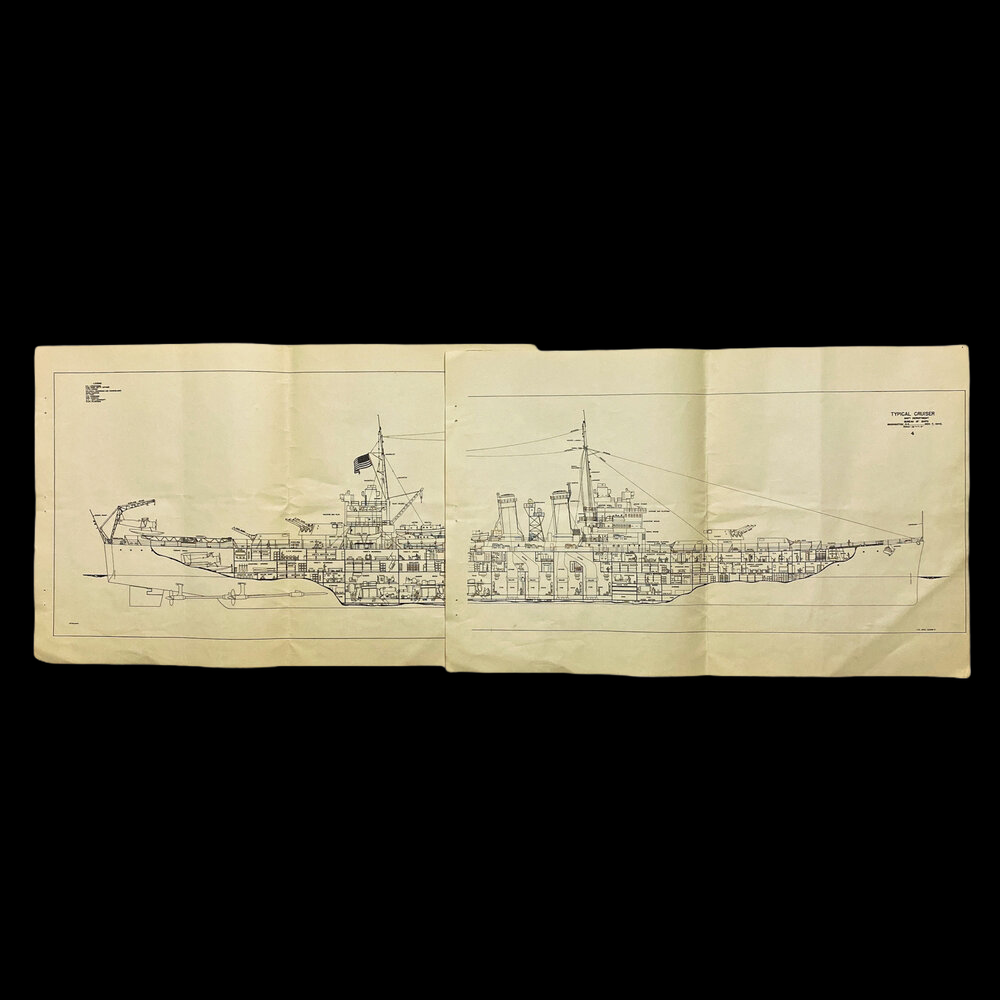


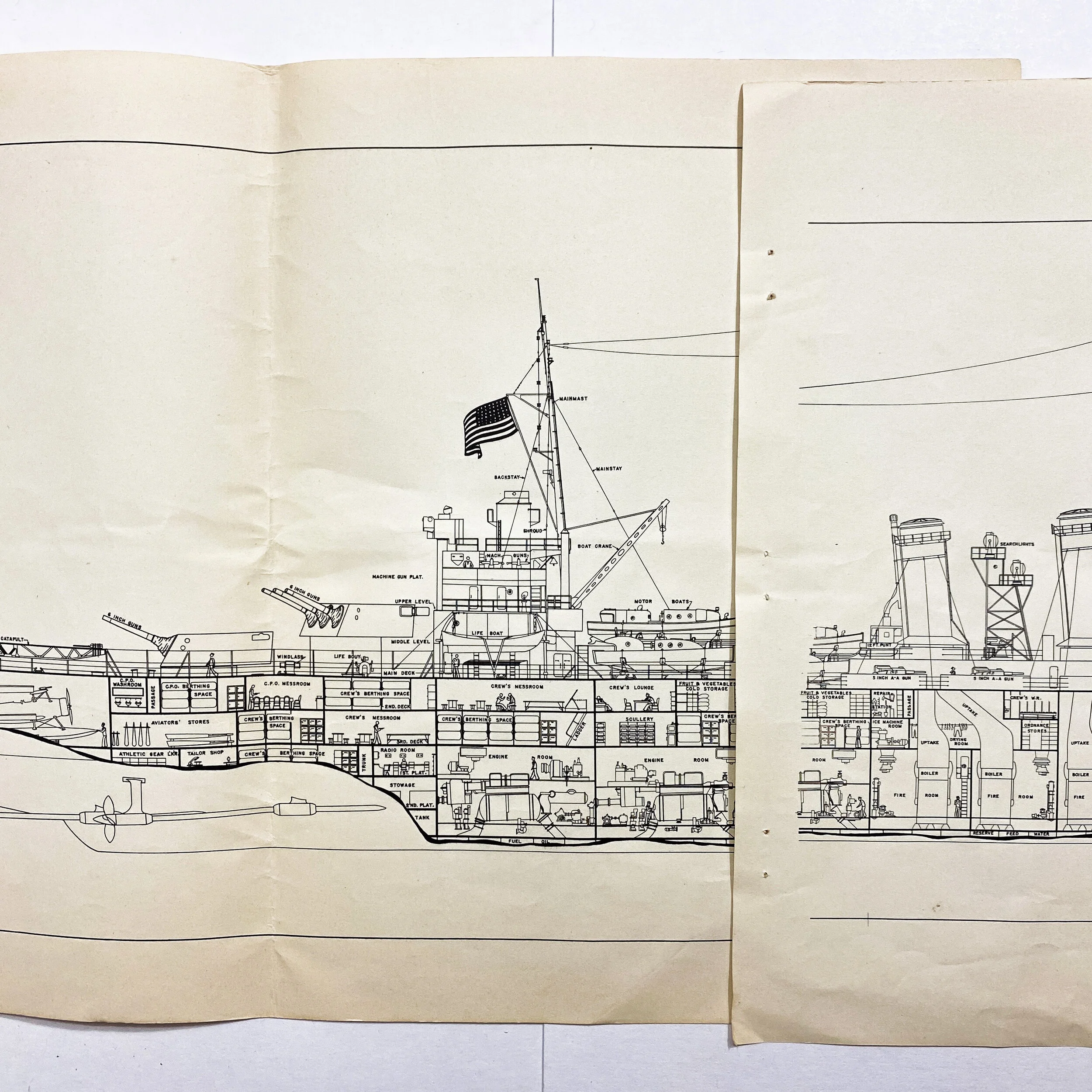




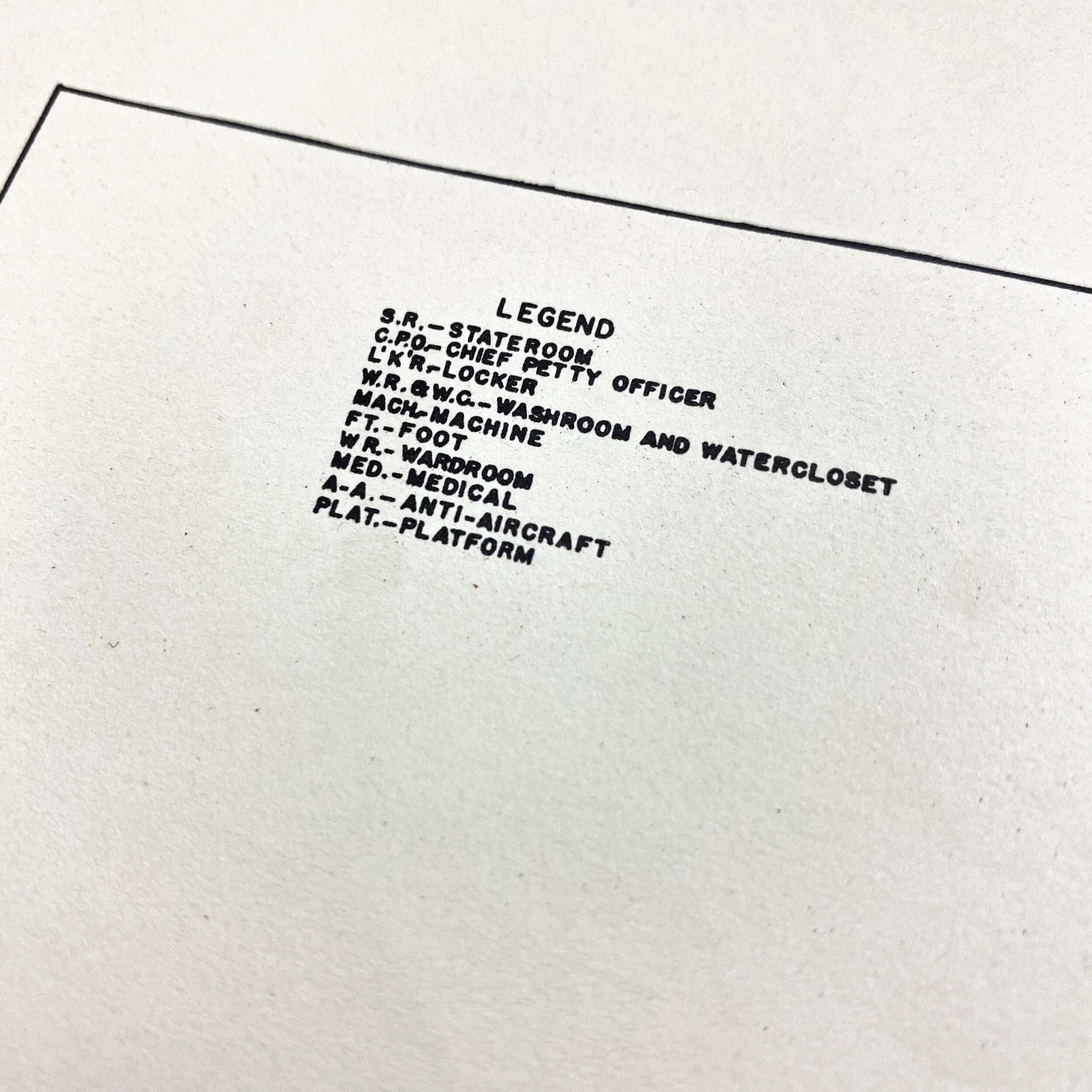
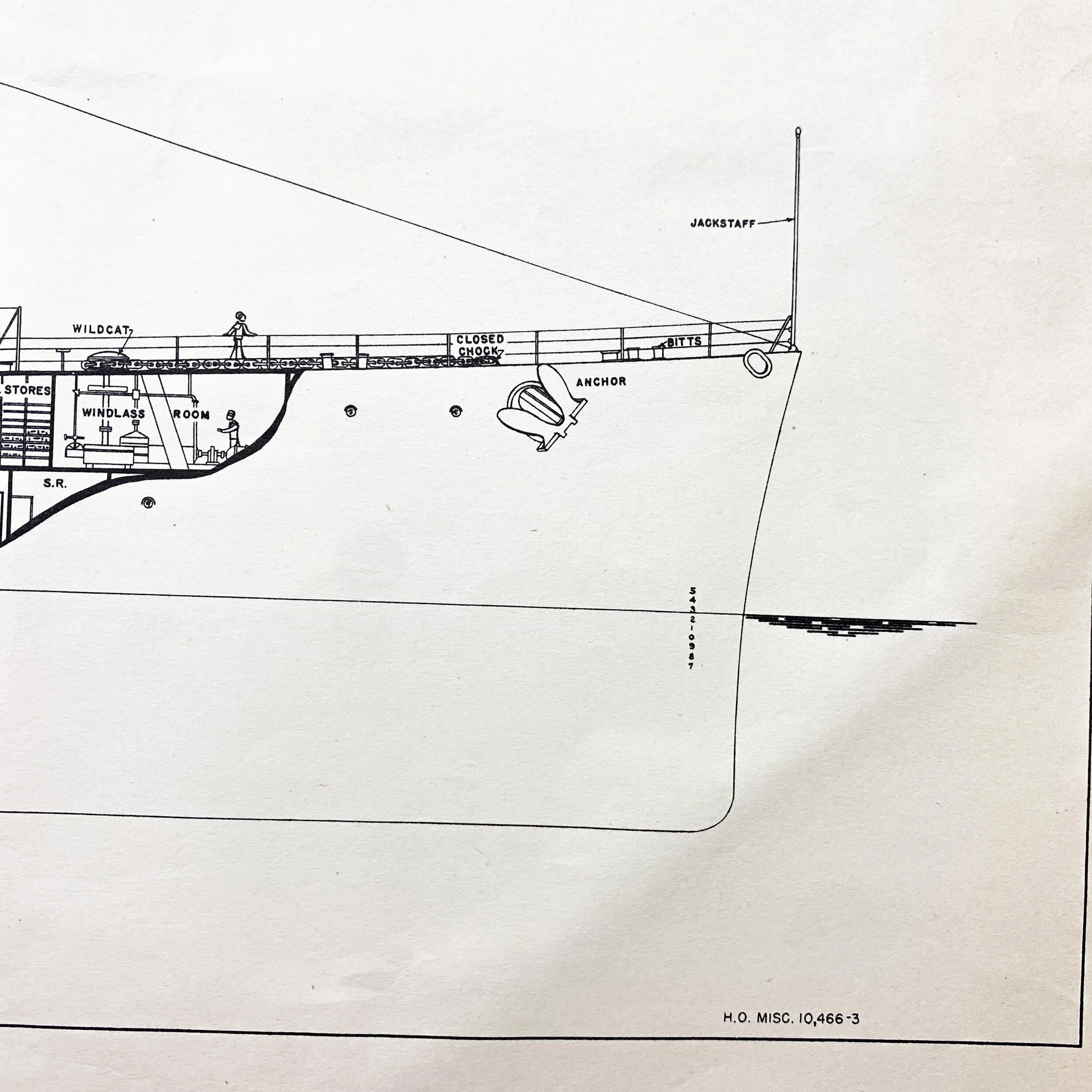
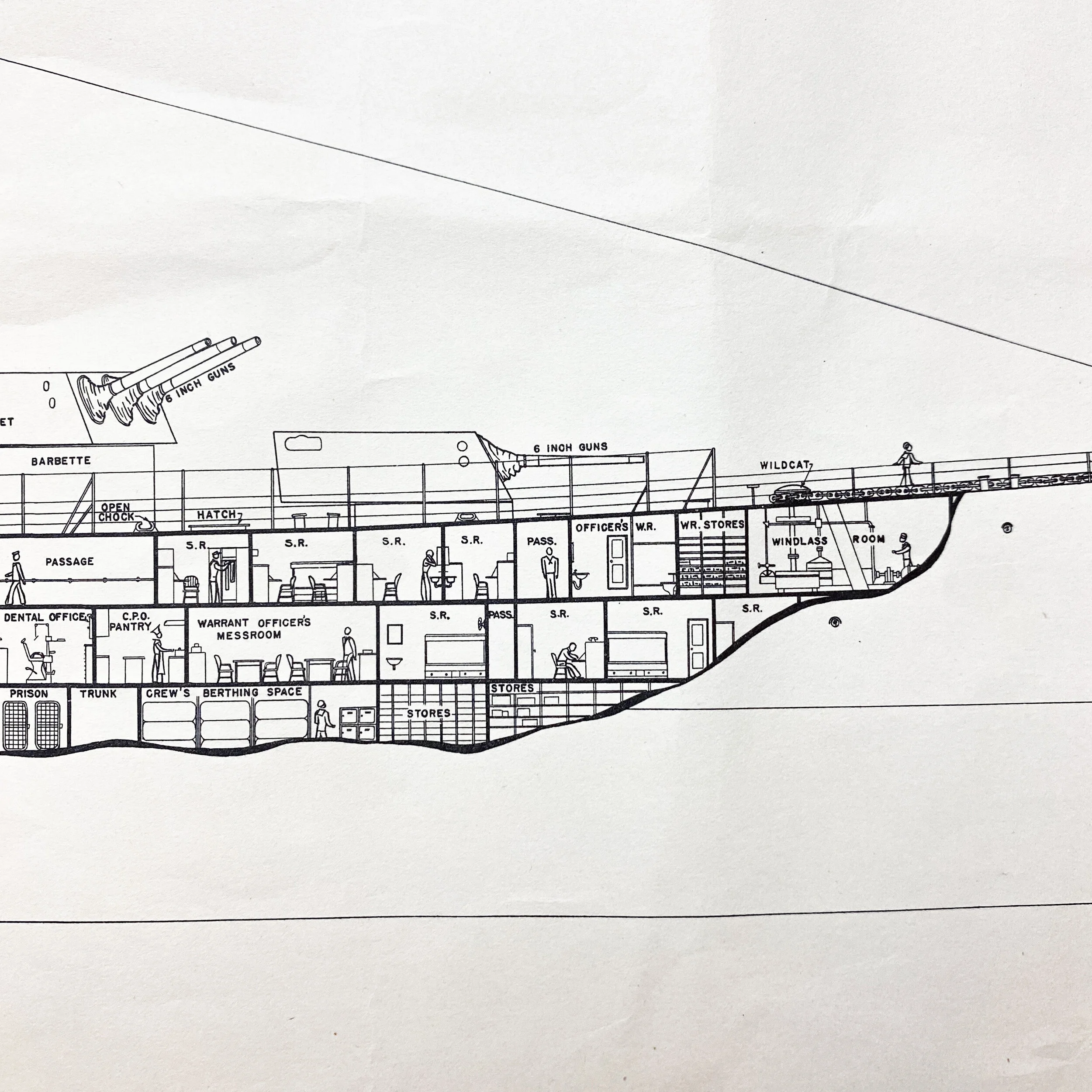



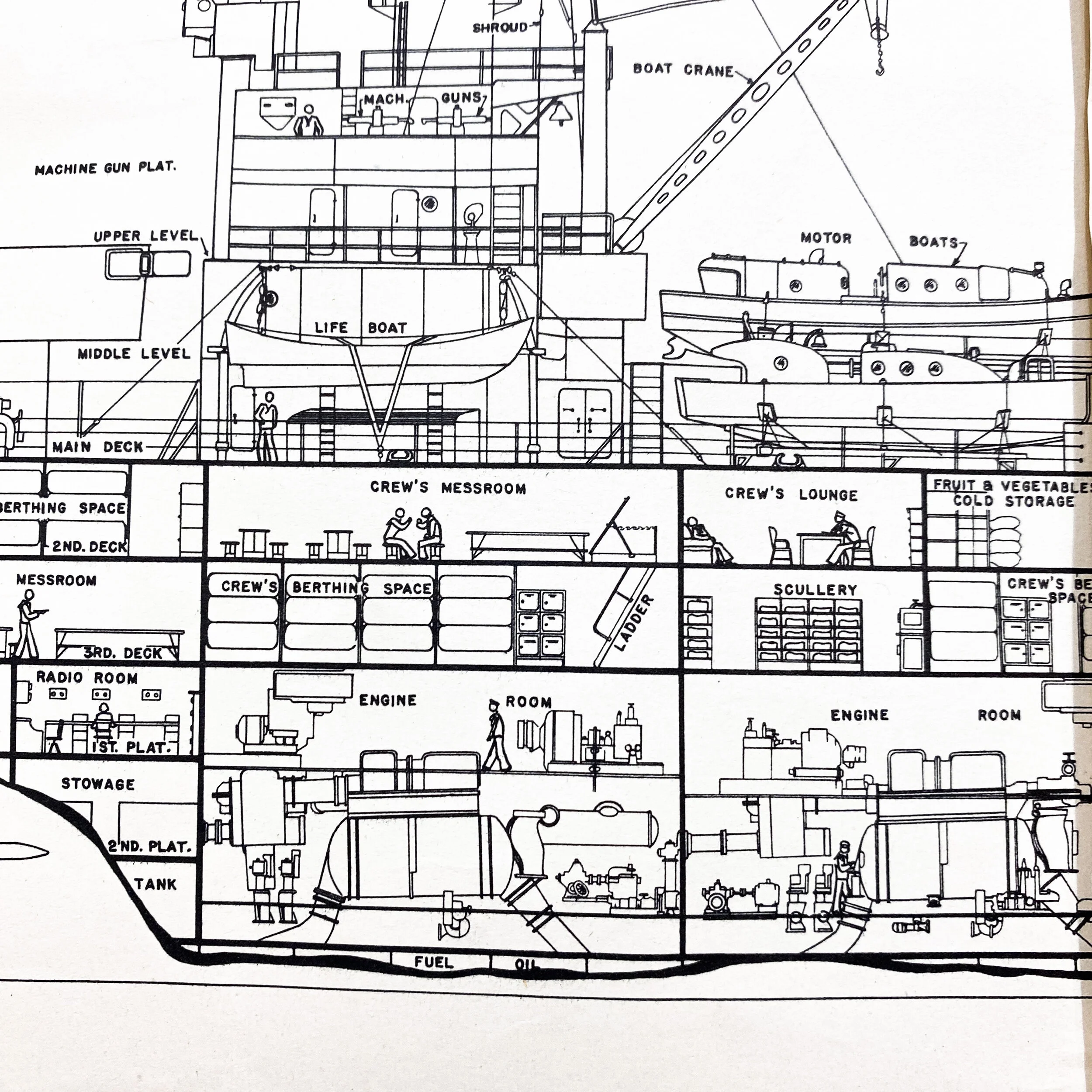



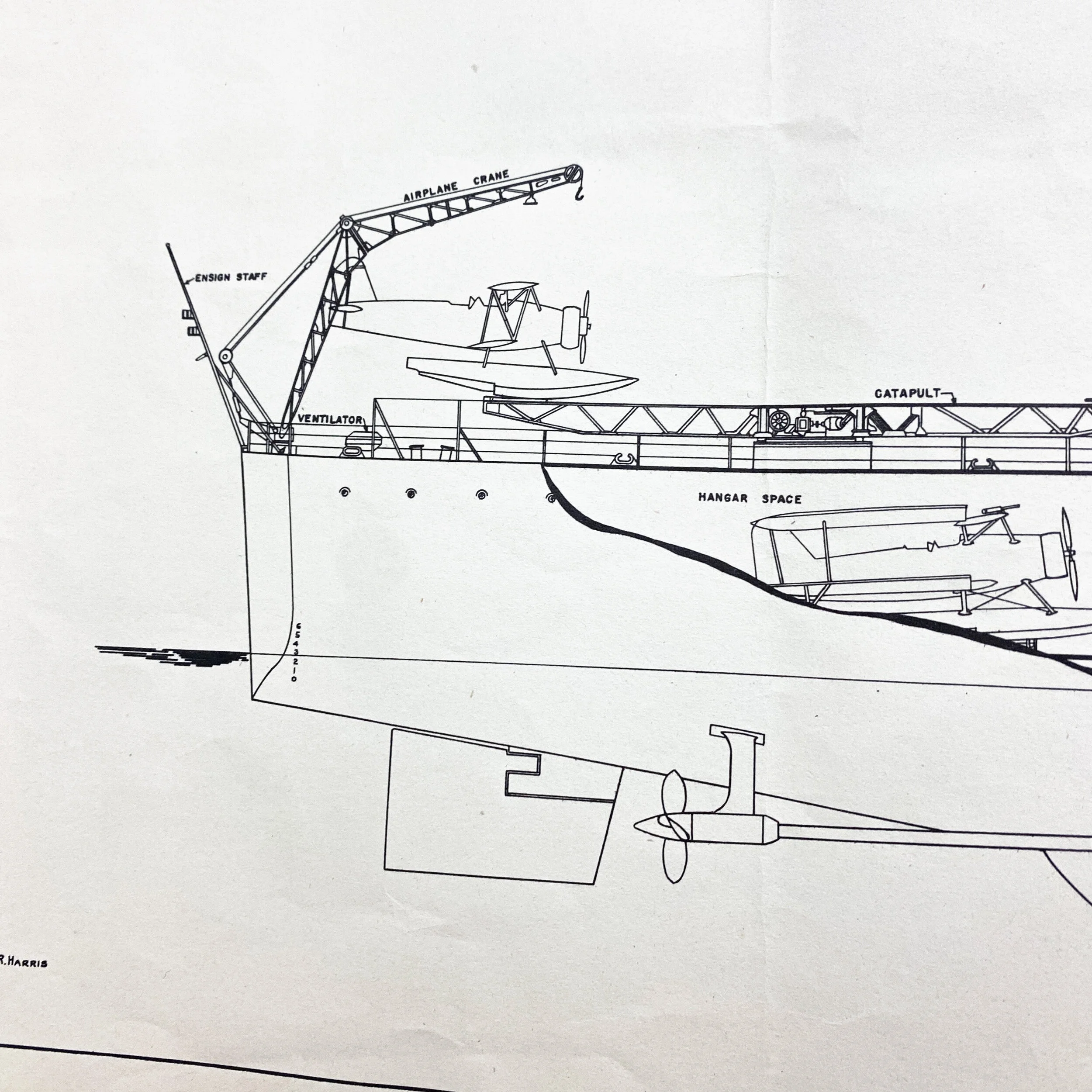
'RESTRICTED' 1942 Dated - U.S. Navy Typical Cruiser Blueprint Cross Section
Size: 35 x 12 inches
This ‘RESTRICTED’ blueprint type diagram poster shows the cross-section of a “Typical Cruiser”, one of the U.S. Navy's most infamous ships used during World War II. Cruisers participated in a number of surface engagements in the early part of World War II, along with escorting carrier and battleship groups throughout the war. In the later part of the war, Allied cruisers primarily provided anti-aircraft (AA) escort for carrier groups and performed shore bombardment. Japanese cruisers similarly escorted carrier and battleship groups in the later part of the war, notably in the disastrous Battle of the Philippine Sea and Battle of Leyte Gulf. Before World War II, cruisers were mainly divided into three types: heavy cruisers, light cruisers and auxiliary cruisers. Heavy cruiser tonnage reached 20–30,000 tons, speed 32–34 knots, endurance of more than 10,000 nautical miles, armor thickness of 127–203 mm. Heavy cruisers were equipped with eight or nine 8 in (203 mm) guns with a range of more than 20 nautical miles. They were mainly used to attack enemy surface ships and shore-based targets. In addition, there were 10–16 secondary guns with a caliber of less than 130 mm (5.1 in). Also, dozens of automatic antiaircraft guns were installed to fight aircraft and small vessels such as torpedo boats. For example, in World War II, American Alaska-class cruisers were more than 30,000 tons, equipped with nine 12 in (305 mm) guns. Some cruisers could also carry three or four seaplanes to correct the accuracy of gunfire and perform reconnaissance. Together with battleships, these heavy cruisers formed powerful naval task forces, which dominated the world's oceans for more than a century.
This diagram (two separate posters combined to make one) of a Navy Cruiser was printed on December 7th of 1942 by the Navy Department Bureau of Ships. Not only does the diagram show each important room within the ship, but it also details other important locations such as each gun emplacement, and searchlights. This poster was prepared by Newton L. Nichols, Captain of the U.S. Navy and Director of Training and was an instrumental tool as it was used as a training tool for WWII United States Naval officers. It was of the utmost importance that an officer knew every room of a ship, thus studying this diagram was extremely crucial.